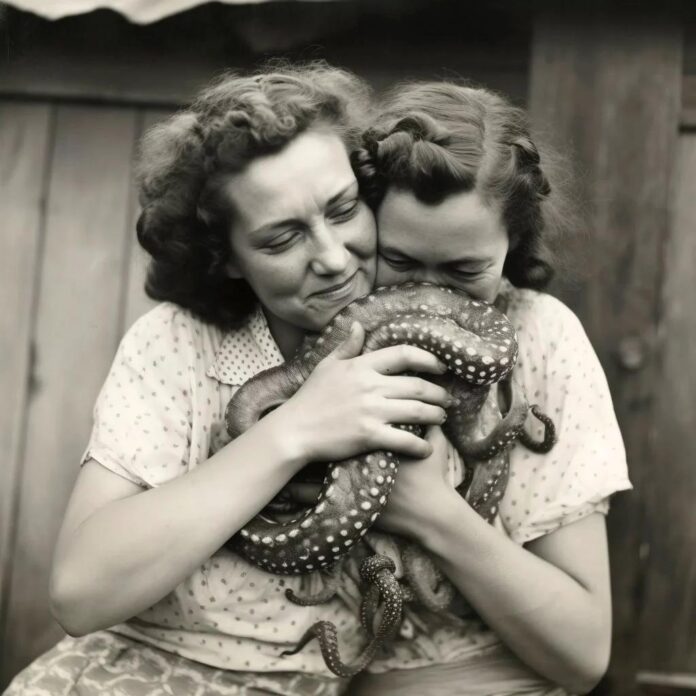Two sisters, gleefully smiling, sit side-by-side, holding a slippery octopus in their arms. Rendered in warm sepia tones and set against an out-of-focus background, this photo, titled , just won a prize for Swedish artist Annika Nordenskiöld at the Ballarat International Foto Biennale in Australia.
But — surprise! — the picture is not real.
The image was generated by feeding prompts to artificial intelligence and won the Biennale’s first-ever A.I. award, which includes a $2,000 prize.The organizers have creatively dubbed the prize “Prompted Peculiar.”
“I understand the fear of AI and find it somewhat healthy,” Nordenskiöld said when accepting the prize on Sunday. “But I see it more like a colleague I am working with.”
“None of these places, people or creatures exist in the physical realm,” she told the . “Many people say my pictures make them uncomfortable … When I explain that A.I. creates them as a kind of collage… many laugh, others are distressed and find them disgusting.”
Nordenskiöld is at something of a vanguard in the A.I.-art overlap, having recently opened a gallery show in Stockholm titled “We Don’t Exist.” She is also set to publish her third book of “photos” created using A.I.
According to the , this prize category is to help artists engage with A.I.’s ever-growing role in all aspects of our lives. For their part, they are calling A.I. work “promptography” to separate it from the traditional medium.
“A photographer goes out into the world and shoots what they see by chance in a certain place, but nowadays, a ‘promptographer’ can stay in a darkened room and create a computer-generated image,” said Boris Eldagsen, a German photographer who was a judge on the Ballarat panel. “Seeing is no longer believing it is real.”
Eldagsen has his own place in the debate over to A.I. photography/promptography: he turned down a first prize in protest at the Sony World Photography Awards because his submission, , was actually made with A.I.
During public discussions about the prize, Eldagsen, along with the other jurors (Una Rey, editor of magazine and Ballarat International Foto Biennale CEO Vanessa Gerrans), called for an international roundtable conversation on photography. To distinguish between photography and promptography, Eldagsen called for a code of ethics and perhaps a watermark to distinguish between the two forms.

























